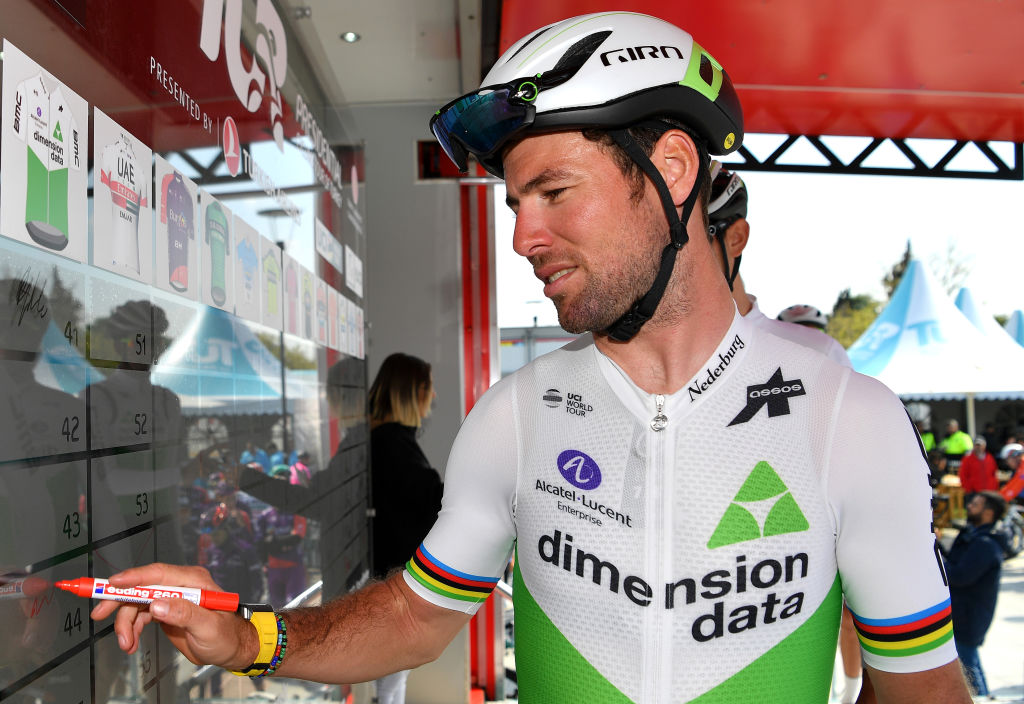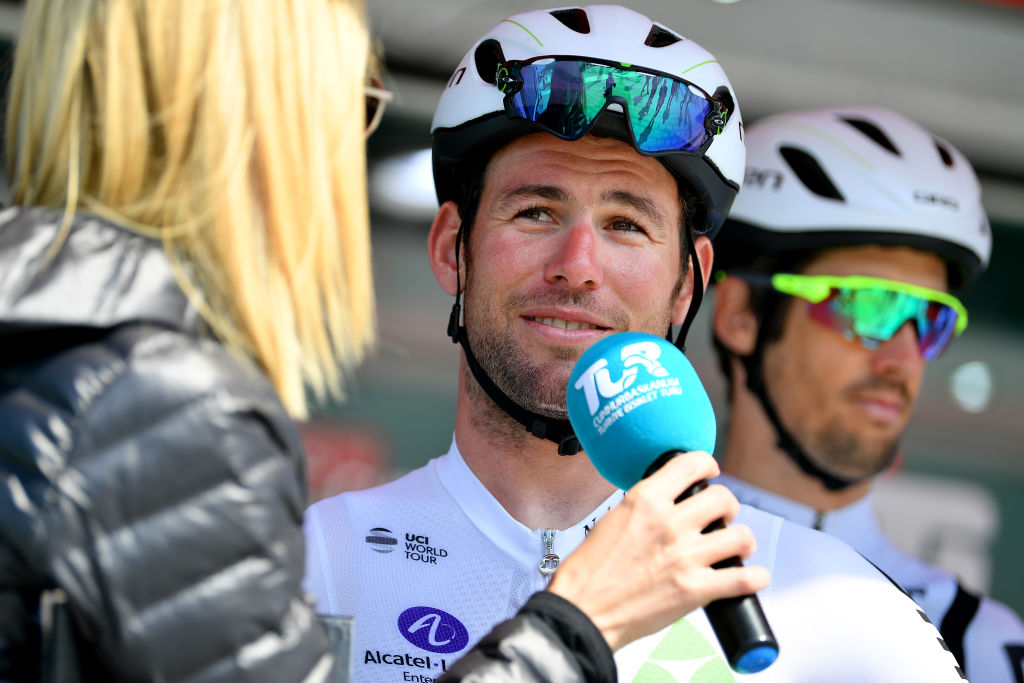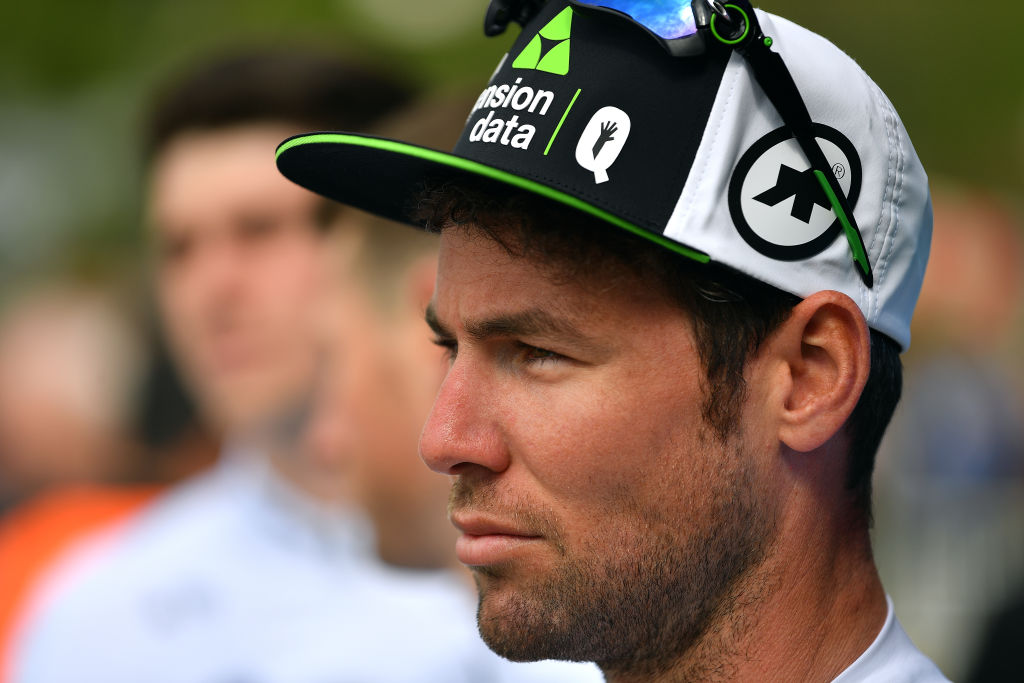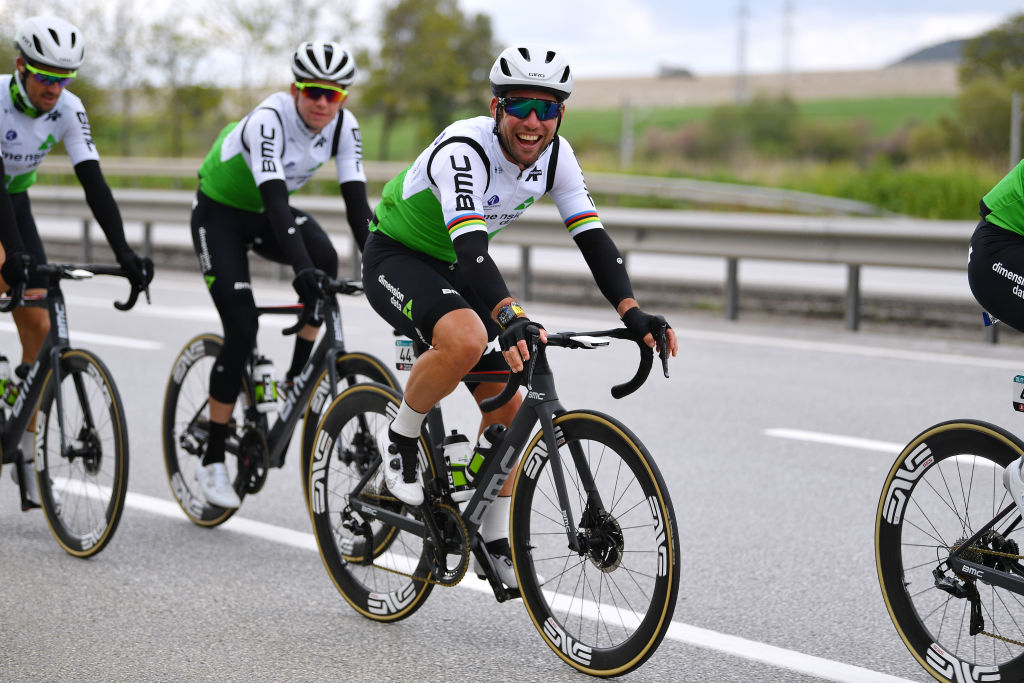Philippa York: Analysing Mark Cavendish's Tour de Yorkshire sprints
'The confidence needed for that last push towards the line is still a work in progress'




A second day and a second chance at the Tour de Yorkshire for Dimension Data to guide Mark Cavendish into a position where he could unleash the sprint that many fans would love to see. They'd love it even more to witness his arms aloft in victory but victory is never as simple as it looks from the outside.
In terms of commitment to the cause the South African team has fulfilled the expectations placed upon them by having the Manxman in their ranks, and there's been no shirking or waiting on others to do the work to keep the early break under control in both stages. The morning orders on the team are fairly obvious; Nicholas Dlamini and Rasmus Tillier do the long hard miles at the head of the peloton and then it's up to the final lead-out pairing of Bernie Eisel and Mark Renshaw to do the rest.
Coming into Bedale on stage 2 things were looking good for Dimension Data as they surfed the wheels and waited for the right moment to place their sprinter in the right place at the right time, that is until Eisel hit the front just that little bit too early coming under the flamme route but Cavendish spotted that and used his experience. He slipped back two spots to be in a better position for the slightly uphill and headwind finish. You have to remember it's as much instinct as anything else when a sprinter choses where to be and who to follow inside those last 1,000 metres.
All was looking good as Renshaw pulled over and the final decision was going to be played out from 300 metres to go. And that's when it all started to get messy because this isn't a WorldTour race and it's not the full flat experience.
Placed nicely on the right and by the barriers one could see that Cavendish was waiting for the guy in front of him to open his sprint. Cavendish was hoping to come from the slipstream.
However, that impromptu lead-out never came, and in fact a wave of guys came from the left over to the right and boxed him in just at the crucial moment. Add to that they were all bouncing off each other in desperation to get on Rick Zabel's wheel and it all became rather dodgy. Gaps closed, Cavendish had to stop pedalling for a split second and that was the end of his chances of, at best, a podium place.
Mark Renshaw was quite succinct in the analysis of his work.
Get The Leadout Newsletter
The latest race content, interviews, features, reviews and expert buying guides, direct to your inbox!
"Maybe we put him a little bit too far in front with the uphill finish. We'll look at the footage of the dying moments and we're glad it came to a sprint but we didn't set him up perfect. We're working hard but it’s hard here with only three WorldTour teams. We have to be patient but we need to get a little bit better. We messed up the final a bit."
However, Cavendish on the other hand was critical of his own performance.
"I bottled it a bit actually, simple as. I had Bernie and Renshaw so I was quite excited. Then Bernie went a little early so I dropped back a bit and knew they would carry on. I found myself on Dan Maclay's wheel and thought 'perfect he'll go early'. But he kind of didn't go and I didn't react. I hesitated by which point we got swamped and I thought 'I can't do that shit any more'.
"I then went to go down the right and I was hesitant. Contrary to popular belief I don't go down barriers, and if I go down close to the barriers and someone comes from the other side of the road somehow I'm at fault so I don't really go down on the barriers. And then that was that. I hesitated a bit longer than I should have anticipated when Dan didn't go. I should have got the jump."
It's clear that from the opening two stages in Yorkshire that Cavendish's form is on track. The fitness is there, importantly, but the confidence needed for that last push towards the line is still a work in progress. It's coming though.
Philippa York is a long-standing Cyclingnews contributor, providing expert racing analysis. As one of the early British racers to take the plunge and relocate to France with the famed ACBB club in the 1980's, she was the inspiration for a generation of racing cyclists – and cycling fans – from the UK.
The Glaswegian gained a contract with Peugeot in 1980, making her Tour de France debut in 1983 and taking a solo win in Bagnères-de-Luchon in the Pyrenees, the mountain range which would prove a happy hunting ground throughout her Tour career.
The following year's race would prove to be one of her finest seasons, becoming the first rider from the UK to win the polka dot jersey at the Tour, whilst also becoming Britain's highest-ever placed GC finisher with 4th spot.
She finished runner-up at the Vuelta a España in 1985 and 1986, to Pedro Delgado and Álvaro Pino respectively, and at the Giro d'Italia in 1987. Stage race victories include the Volta a Catalunya (1985), Tour of Britain (1989) and Critérium du Dauphiné Libéré (1990). York retired from professional cycling as reigning British champion following the collapse of Le Groupement in 1995.
